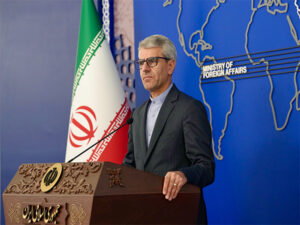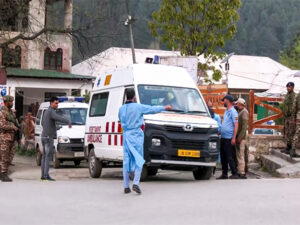Australia, NZ announces USD 11 million in aid for quake-hit Turkey and Syria
Canberra [Australia], February 7 (ANI): Australian Prime Minister Anthony Albanese and New Zealand Prime Minister Chris Hipkins on Monday announced USD 11 million in aid for earthquake-hit Turkey and Syria, reported CNN.
Both leaders pledged a combined total of USD 11.5 million in aid for victims of the devastating earthquake. During a joint news conference in Canberra on Tuesday, Albanese said the country would provide an initial USD 10 million in humanitarian assistance through the Red Cross, Red Crescent and humanitarian agencies.
“Australia’s assistance will target those in greatest need,” he said.
Meanwhile, Hipkins, who is on his first state visit to Australia, said Wellington would contribute USD 1.5 million, reported CNN. In a statement, New Zealand Foreign Minister Nanaia Mahuta said the “humanitarian contribution will support teams from the Turkish Red Crescent and Syrian Arab Red Crescent to deliver essential relief items such as food supplies, tents and blankets, and provide lifesaving medical assistance and psychological support.”
More than 4,300 people have been killed and thousands injured after a magnitude 7.8 earthquake struck Turkey and Syria early Monday, according to officials and agencies, reported CNN. At least 4,372 deaths have been confirmed after a powerful magnitude 7.8 earthquake rocked Turkey and Syria early Monday. Turkey’s toll rose to 2,921 as of Tuesday morning, according to Yunus Sezer, Turkey’s head of disaster services.
A total of 15,834 injuries have been reported, Sezer said in a news conference in Ankara. Sezer said he would provide a more comprehensive update at 6 am local time (10 pm ET). In Syria, 1,451 deaths and 3,531 injuries have been reported by officials. Thousands of buildings collapsed in both countries and aid agencies are particularly worried about north-western Syria, where more than 4 million people were already relying on humanitarian assistance.
The quake, one of the strongest to hit the region in more than 100 years, struck 23 kilometres (14.2 miles) east of Nurdagi, in Turkey’s Gaziantep province, at a depth of 24.1 kilometres (14.9 miles), the US Geological Survey said.
At least 100 aftershocks measuring 4.0 or greater have occurred since the 7.8 magnitude earthquake struck southern Turkey on Monday morning local time, according to the United States Geological Survey.
As the time from the original earthquake extends, the frequency and magnitude of the aftershocks tend to decrease. However, 5.0 to 6.0-plus aftershocks are still likely to occur and bring a risk of additional damage to structures that are compromised from the original earthquake. This brings a continued threat to rescue teams and survivors.
The aftershocks stretch for more than 300 kilometres (186 miles) along the fault zone that ruptured in southern Turkey, oriented from southwest to northeast and stretching from the border with Syria up through the province of Malatya.
Millions of people in northwest Syria — mostly women and children — were already in “dire need” of humanitarian aid before the disaster, according to the United Nations, amid a harsh winter and a cholera outbreak.
Turkey has taken in about 3.5 million Syrian refugees in recent years, according to the UN refugee agency, many of them in places now devastated by the quake, reported Washington Post. Kerem Kinik, president of the Turkish Red Crescent, tweeted that his group is shipping extra blood to the earthquake zone. State media has said that more than 14,000 people were injured. The organization tweeted that it has sent five mobile kitchens, 77 catering vehicles, almost 2,000 tents and more than 25,000 blankets.






